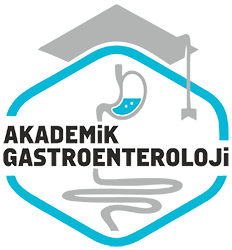Aralik 2008
Türkiye’de birinci basamak saglik kurumlarina basvuran hastalarda gastroözofageal reflü hastalığı görülme sıklığı
The frequency of gastroesophageal reflux disease in patients admitting to primary health care centers in Turkey
- Ana Sayfa
- Sayılar
- Aralik 2008
- Türkiye’de birinci basamak saglik kurumlarina basvuran hastalarda gastroözofageal reflü hastalığı görülme sıklığı...
Özet
Giriş ve Amaç: Gastroözofageal reflü hastalığı, gastrointestinal sistemin sik görülen hastalıklarından birisi olup, prevalansi çalışmanın yapildigi topluma göre degismektedir. Türkiye’de gastroözofageal reflü hastalığı epidemiyolojisi hakkinda sinirli bilgi vardır. Bu çalışma da Türkiye’de birinci başamak Sağlık kuruluslarina basvuran hastalarda gastroözofageal reflü hastalığı sikligini saptamak ve epidemiyolojik özelliklerini belirlemek amaçlanmıştır. Gereç ve Yöntem: çalışma Türkiye’nin 32 farkli ilindeki birinci başamak Sağlık kuruluslarina basvuran olgular arasından rasgele seçilen 7520 olguda gerçekleştirilmiştir. Hastalar başvurudaki ana yakinmalarina göre gastrointestinal sistem ve gastrointestinal sistem dışı semptomlarla basvuranlar olmak üzere iki guruba ayrıldıktan sonra, her iki gurup içinden rastgele seçilen 2203 olguya yüz yüze görüsülerek anket yapilmis ve gastroözofageal reflü hastalığı prevalansi ve epidemiyolojik özellikleri arastirilmıştır. Gastroözofageal reflü hastalığı tanısı Roma-II kriterlerine göre konulmustur. Bulgular: çalışmaya katilan 7520 hastanın 2157’si (%31.5) gastrointestinal sistem semptomları ile doktora başvururken, 5363’ü (%68.5) gastrointestinal sistem dışı yakinmalar ile basvurmustur. Gastrointestinal sistem yakinmalari ile basvuran 2157 hasta arasından rasgele anket yapılan 1461 olgunun 560’inda (%38.3), gastrointestinal sistem dışı yakinmalar ile basvuran 5363 olgu arasından rasgele anket yapılan 742 olgunun 189’unda (%25.4) gastroözofageal reflü hastalığı tanısı konulmustur. Gastroözofageal reflü hastali gi prevalansi %33.9 olarak bulunmustur. Hastaların çogunlugu kadın olup (%69.3), yaş ortalaması 44±14 yıldir. Retrosternal yanma (%60.1), regürjitasyon (%59.1), retrosternal agri (%35.5) ve öksürük (%27.6) En sık görülen yakinmalardir. Hastaların %16.6’si retrosternal yanmayi ayda bir, %30’u haftada bir, %39.5’i haftada birden fazla, %13.9’u her gün yaşadigini ifade etmektedir. Medeni durum, çay, sigara, kahve ve alkol kullanımi ile gastroözofageal reflü hastalığı arasında istatistiksel anlamli bir ilişki bulunmamıştır. Ekonomik durum (p<0,01) ve egitim düzeyi (p<0,01) ile gastroözofageal reflü hastalığı arasında anlamli pozitif bir korelasyon vardır. Sonuç: Sonuç olarak, ülkemizde gastroözofageal reflü hastalığı batili ülkelerde rastlanan sikliga yakin oranlarda görülmekte olup retrosternal yanma ve regürjitasyon başvuruda En sık rastlanan şikayetler olarak ortaya çikmaktadır.
Abstract
Background and Aims: Gastroesophageal reflux disease is a common gastrointestinal disorder and its prevalence differs depending on the population studied. There are few data on the epidemiology of gastroesophageal reflux disease in Turkey. The aim of the study was to determine the frequency and epidemiologic features of gastroesophageal reflux disease in patients admitting to primary health care centers in Turkey. Materials and Methods: The study was carried out in a population of 7520 patients randomly selected among those admitted to primary health care centers in 32 different cities in Turkey. Patients were categorized into two groups [gastrointestinal system or non- gastrointestinal system] depending on the main symptoms on admission. The prevalence and epidemiologic features of gastroesophageal reflux disease were investigated via face-to-face questionnaire to a total of 2203 randomly selected patients from both of the groups. The diagnosis of gastroesophageal reflux disease was based on the Rome-II criteria. Results: Among the 7520 patients participating in the study, 2157 (31.5%) were admitted with gastrointestinal system symptoms and 5363 (41%) with non- gastrointestinal system symptoms. Of the 2157 patients with gastrointestinal system symptoms, the questionnaire was administered in a randomly selected 1461 patients and a diagnosis of gastroesophageal reflux disease was reached in 560 (38.3%). Of the 5363 patients with non- gastrointestinal system symptoms, a questionnaire was administered in a randomly selected 742 patients and a diagnosis of dyspepsia was reached in 189 (25.4%). The prevalence of dyspepsia was 33.9% in the whole group. Most of the patients were female (69.3%) and the mean age was 44 ± 14 years. Heartburn (60.1%), regurgitation (59.1%), retrosternal pain (35.5%) and cough (27.6%) were the most frequent symptoms. Sixteen percent of the patients experienced heartburn once a month, 30% once a week, 39.5% more than once a week, and 13.9% daily. There were no significant associations between gastroesophageal reflux disease and marital status, smoking, or tea, alcohol and coffee consumption. Economic status (p<0.01) and education level (p<0.01) had a significant positive correlation with gastroesophageal reflux disease. Conclusions: The prevalence of gastroesophageal reflux disease in Turkey is similar to that in western countries. Heartburn and regurgitation are the most frequent symptoms on admission.



